Size-Controlled Bimagnetic FePt/iron oxide Hybrid Nanocrystals
advertisement
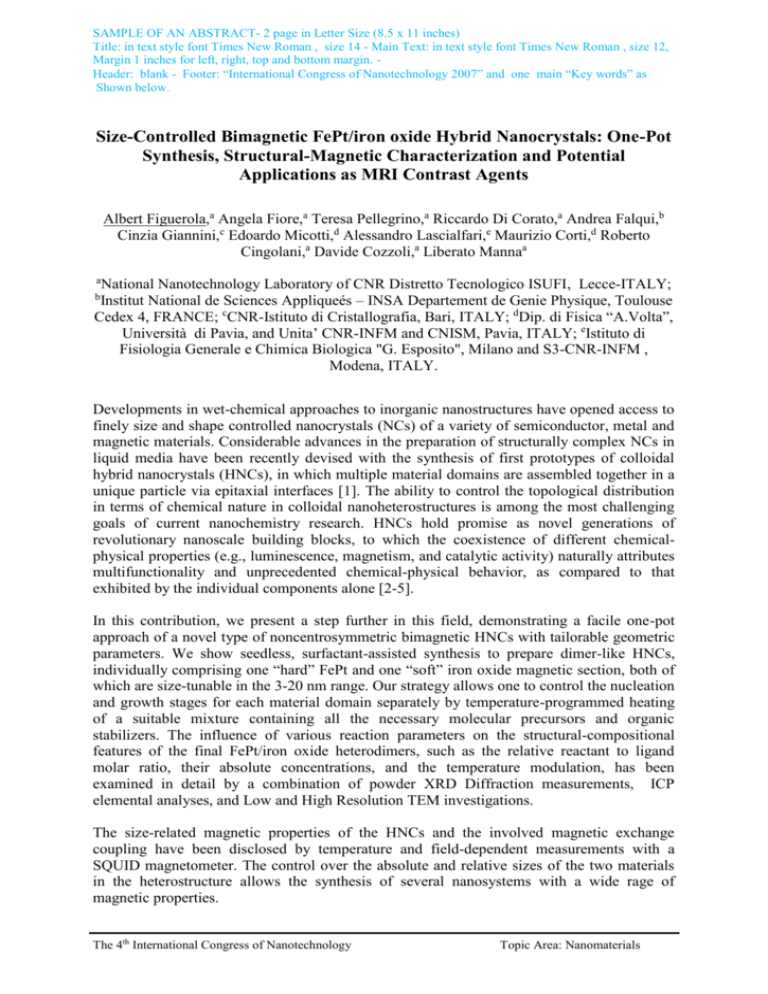
SAMPLE OF AN ABSTRACT- 2 page in Letter Size (8.5 x 11 inches) Title: in text style font Times New Roman , size 14 - Main Text: in text style font Times New Roman , size 12, Margin 1 inches for left, right, top and bottom margin. Header: blank - Footer: “International Congress of Nanotechnology 2007” and one main “Key words” as Shown below. Size-Controlled Bimagnetic FePt/iron oxide Hybrid Nanocrystals: One-Pot Synthesis, Structural-Magnetic Characterization and Potential Applications as MRI Contrast Agents Albert Figuerola,a Angela Fiore,a Teresa Pellegrino,a Riccardo Di Corato,a Andrea Falqui,b Cinzia Giannini,c Edoardo Micotti,d Alessandro Lascialfari,e Maurizio Corti,d Roberto Cingolani,a Davide Cozzoli,a Liberato Mannaa a National Nanotechnology Laboratory of CNR Distretto Tecnologico ISUFI, Lecce-ITALY; Institut National de Sciences Appliqueés – INSA Departement de Genie Physique, Toulouse Cedex 4, FRANCE; cCNR-Istituto di Cristallografia, Bari, ITALY; dDip. di Fisica “A.Volta”, Università di Pavia, and Unita’ CNR-INFM and CNISM, Pavia, ITALY; eIstituto di Fisiologia Generale e Chimica Biologica "G. Esposito", Milano and S3-CNR-INFM , Modena, ITALY. b Developments in wet-chemical approaches to inorganic nanostructures have opened access to finely size and shape controlled nanocrystals (NCs) of a variety of semiconductor, metal and magnetic materials. Considerable advances in the preparation of structurally complex NCs in liquid media have been recently devised with the synthesis of first prototypes of colloidal hybrid nanocrystals (HNCs), in which multiple material domains are assembled together in a unique particle via epitaxial interfaces [1]. The ability to control the topological distribution in terms of chemical nature in colloidal nanoheterostructures is among the most challenging goals of current nanochemistry research. HNCs hold promise as novel generations of revolutionary nanoscale building blocks, to which the coexistence of different chemicalphysical properties (e.g., luminescence, magnetism, and catalytic activity) naturally attributes multifunctionality and unprecedented chemical-physical behavior, as compared to that exhibited by the individual components alone [2-5]. In this contribution, we present a step further in this field, demonstrating a facile one-pot approach of a novel type of noncentrosymmetric bimagnetic HNCs with tailorable geometric parameters. We show seedless, surfactant-assisted synthesis to prepare dimer-like HNCs, individually comprising one “hard” FePt and one “soft” iron oxide magnetic section, both of which are size-tunable in the 3-20 nm range. Our strategy allows one to control the nucleation and growth stages for each material domain separately by temperature-programmed heating of a suitable mixture containing all the necessary molecular precursors and organic stabilizers. The influence of various reaction parameters on the structural-compositional features of the final FePt/iron oxide heterodimers, such as the relative reactant to ligand molar ratio, their absolute concentrations, and the temperature modulation, has been examined in detail by a combination of powder XRD Diffraction measurements, ICP elemental analyses, and Low and High Resolution TEM investigations. The size-related magnetic properties of the HNCs and the involved magnetic exchange coupling have been disclosed by temperature and field-dependent measurements with a SQUID magnetometer. The control over the absolute and relative sizes of the two materials in the heterostructure allows the synthesis of several nanosystems with a wide rage of magnetic properties. The 4th International Congress of Nanotechnology Topic Area: Nanomaterials SAMPLE OF AN ABSTRACT- 2 page in Letter Size (8.5 x 11 inches) Title: in text style font Times New Roman , size 14 - Main Text: in text style font Times New Roman , size 12, Margin 1 inches for left, right, top and bottom margin. Header: blank - Footer: “International Congress of Nanotechnology 2007” and one main “Key words” as Shown below. Superparamagnetic nanoparticles suspensions, also known as ferrofluids, have been shown to be useful as multifunctional tools in biomedical applications.[6] Both diagnosis and therapeutic functions can be achieved due to the magnetic response of the ferrofluid during its exposure to an external magnetic field. Their main advantages are the absence of residual magnetization in the fluid after the removal of the field, avoiding possible undesired tissue damages or nanoparticles aggregation, and the potential magnetic addressing of the ferrofluid to a specific tissue that would allow injection of minor doses of either inorganic material and/or chemotherapeutic drugs and would simultaneously decrease further collateral effects in healthy tissues. In order to check the potential of FePt/iron oxide nanocrystals as image contrast agents in Magnetic Resonance Imaging (MRI), NMR-Dispersion measurements have been performed on previously water-transferred FePt nanocrystals and on the corresponding FePt/iron oxide heterostructures. The data confirm that some FePt/iron oxide hybrid materials show higher relaxivity values with respect to the clinically used ENDOREM compound,[7] which indicates their high potential as imaging contrast agents. References: [1] P. Davide Cozzoli, Teresa Pellegrino, Liberato Manna, Chem. Soc. Rev., 35 (2006) 1195. [2] Hyungrak Kim, Marc Achermann, Laurent P. Balet, Jennifer A. Hollingsworth, Victor I. Klimov, J. Am. Chem. Soc., 127 (2005) 544. [3] Marianna Casavola, Vicenzo Grillo, Elvio Carlino, Cinzia Giannini, Fabia Gozzo, Enrique Fernandez Pinel, Miguel Angel Garcia, Liberato Manna, Roberto Cingolani, P. Davide Cozzoli, Nano Lett., 7 (2007) 1386. [4] Hao Zeng, Jing Li, Z. L. Wang, J. P. Liu, Shouheng Sun, Nano Lett., 4 (2004) 187. [5] Teresa Pellegrino, Angela Fiore, Elvio Carlino, Cinzia Giannini, P. Davide Cozzoli, Giuseppe Ciccarella, Marc Respaud, Luca Palmirotta, Roberto Cingolani, Liberato Manna, J. Am. Chem. Soc., 128 (2006) 6690. [6] Venkatasubramaniam S. Kalambur, Bumsoo Han, Bruce E. Hammer, Thomas W. Shield, John C. Bischof, Nanotech., 16 (2005) 1221. [7] Yi-Xiang J.Wang; Shahid M. Hussain; Gabriel P. Krestin, Eur. Radiol. 2001, 11, 2319. Figure: The 4th International Congress of Nanotechnology Topic Area: Nanomaterials
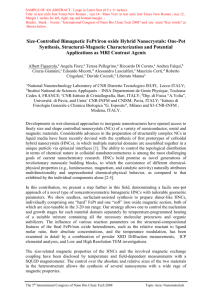
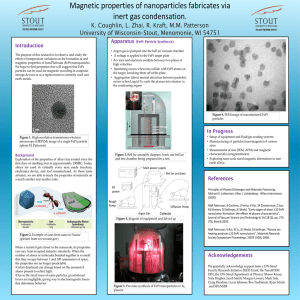
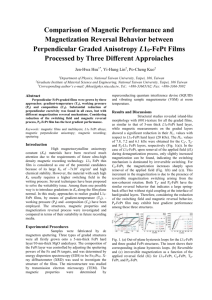

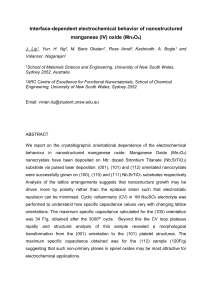




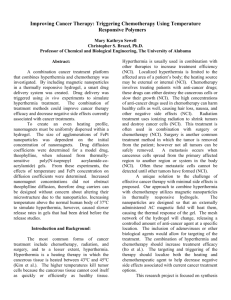
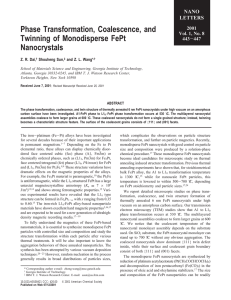
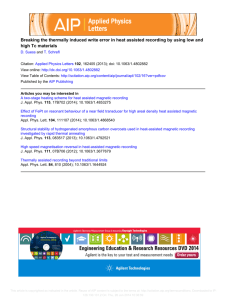
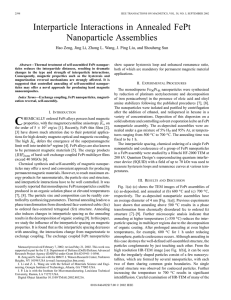
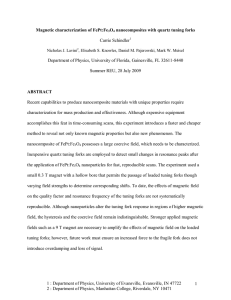
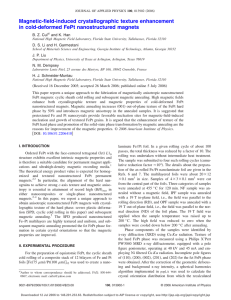
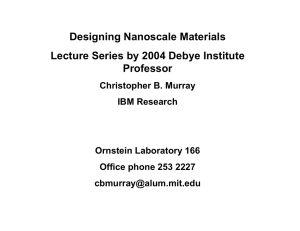
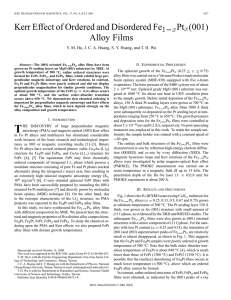
![Synthesis, self-assembly, and magnetic properties of [FePt]/sub 1](http://s2.studylib.net/store/data/018740111_1-dccf7bfde9035a0e52b59f24cb3e4205-300x300.png)